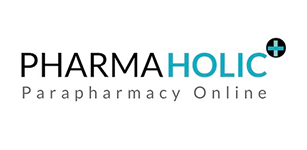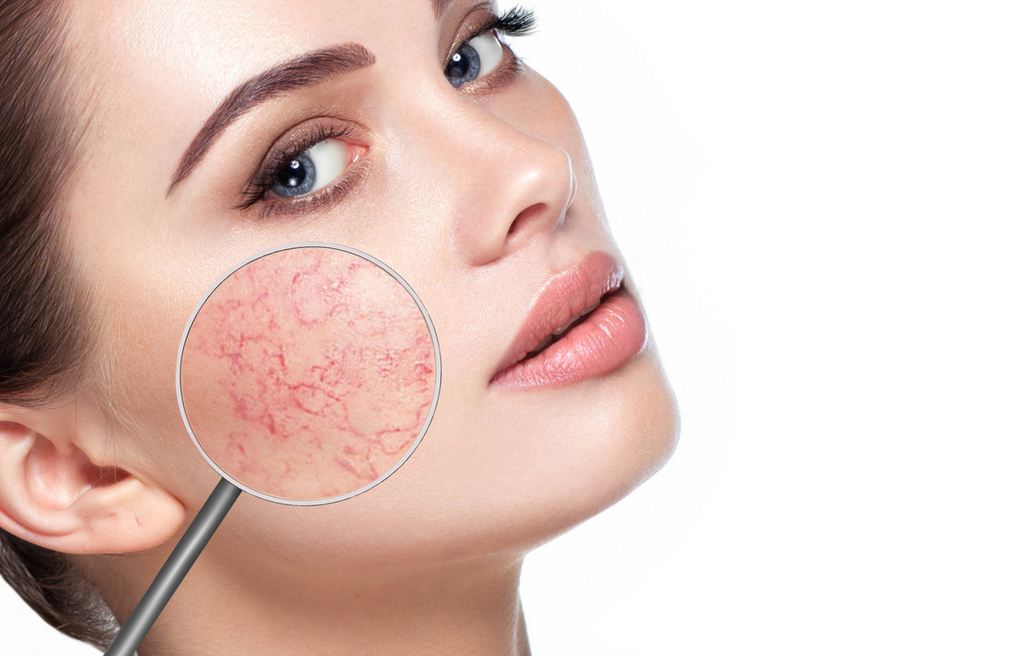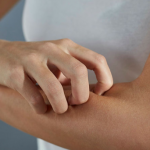If your face looks like you’re blushing and you get bumps that are a bit like acne, you might have skin condition called rosacea.
What is rosacea?
Rosacea is a common skin disease. It often begins with a tendency to blush or flush more easily than other people. The redness can slowly spread beyond the nose and cheeks to the forehead and chin. Even the ears, chest, and back can be red all the time
Symptoms of Rosacea include:
- Flushing: Many people who have rosacea have a history of frequent blushing or flushing. The facial redness, which might come and go, often is the earliest sign of the disorder.
- Persistent redness: Persistent facial redness might resemble a blush or sunburn that does not go away.
- Bumps and pimples: Small red solid bumps or pus-filled pimples often develop. Sometimes the bumps might resemble acne, but blackheads are absent. Burning or stinging might be present.
- Visible blood vessels: Small blood vessels become visible on the skin of many people who have rosacea
What causes rosacea?
The exact cause of rosacea is unknown. Possible causes include defects in the immune, nervous, or vascular systems. Rosacea tends to run in families. People who are fair-skinned and blush easily are more likely to have it. Symptoms often begin in adults between 30 and 60 years of age. Women get rosacea more on the cheeks and chin, while men are more likely to have rhinophyma. Rosacea tends to be more severe in men.
The four types of rosacea are:
- Subtype one, known as erythematotelangiectatic rosacea (ETR), is associated with facial redness, flushing, and visible blood vessels.
- Subtype two, papulopustular (or acne) rosacea, is associated with acne-like breakouts, and often affects middle-aged women.
- Subtype three, known as rhinophyma, is a rare form associated with thickening of the skin on your nose. It usually affects men and is often accompanied by another subtype of rosacea.
- Subtype four is known as ocular rosacea, and its symptoms are centered on the eye area.
Flare-ups might be triggered by:
- Hot drinks and spicy foods
- Red wine and other alcoholic beverages
- Temperature extremes
- Sun or wind
- Emotions
- Exercise
- Drugs that dilate blood vessels, including some blood pressure medications
- Some cosmetic, skin or hair care products
How to Manage Rosacea?
- There is no cure for rosacea. The primary goal of treatment is to control the redness, inflammation, and skin eruptions. The biggest key to controlling rosacea is to avoid triggers — factors that cause the skin to flush.
Lifestyle modifications
- Put on sunscreen
- Use only gentle skin care products.Avoid cleansers and creams that have alcohol, fragrance, witch hazel, and other harsh ingredients. After you wash your face, gently blot your skin dry with a soft cloth.
- Use a moisturizer. It’s especially helpful in cold weather. Low temps and wind can dry up your skin.
- Massageyour face. Gently rub your skin in a circular motion. Start in the middle of your face and work your way outward toward your ears.
- Cover up.Put a green-tinted cover-up on your face to hide redness and broken blood vessels.
- Go indoors.Get out of the heat and sun and cool off in an air-conditioned room.
- Care for your eyes.If rosacea has made them red and irritated, use a watered-down baby shampoo or eyelid cleaner to gently clean your eyelids every day. Also put a warm compress on your eyes a few times a day.



